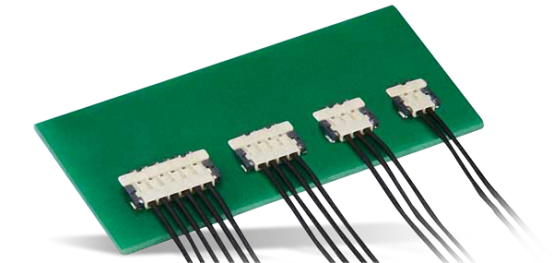
In the electronic components industry, connectors play a crucial role in ensuring the transmission of signals, power, and data between different devices. Among the various types of connectors, circular connectors and cable connectors stand out due to their unique advantages and widespread applications. So, what sets them apart? What are their respective strengths and application scenarios? This article will provide a detailed comparison of circular connectors and cable connectors, focusing on definitions, performance, applications, and selection recommendations.
Catalog
I. Overview
Connectors are an essential component in any electronic device, ensuring stable and efficient electrical connections. In the electronics industry, circular connectors and cable connectors have different structures and applications. Circular connectors are typically used in fields that require durability and high protection levels, while cable connectors play a significant role in cost-effective and efficient applications. Although both serve similar functions, they differ significantly in terms of design, performance, and usage scenarios.
II. Definition
· Circular Connector: A circular connector is an electrical connection component with a cylindrical shell, typically made up of multiple metal contacts, pins, and locking mechanisms. These connectors are often used in environments requiring high mechanical strength, corrosion resistance, and protection against water and dust. Common types of circular connectors include M12, M8, and military-standard MIL-DTL-38999. They are widely used in industrial automation, automotive, and aerospace applications.

· Cable Connector: A cable connector is integrated with a cable and primarily used for power, signal, or data transmission between devices. Cable connectors often feature standardized interfaces like USB, HDMI, and RJ45, making them common in consumer electronics, communication devices, and home entertainment systems. Compared to circular connectors, cable connectors usually offer more standardized interfaces, making them easier to install and maintain.

III. Performance
1. Performance of Circular Connectors
· Durability: Circular connectors are designed to withstand frequent insertion and removal cycles, with excellent vibration and shock resistance. They are commonly used in industrial environments that require high reliability.
· Protection: Circular connectors typically offer high levels of water and dust protection, such as IP67 and IP68 ratings, making them ideal for harsh environments.
· Versatility: Circular connectors support multi-channel signal transmission, including power, data, and control signals, meeting the needs of complex electrical systems.
2. Performance of Cable Connectors
· Standardization: Cable connectors generally adhere to industry standards, such as USB and HDMI, making them easy to interconnect and replace, thereby reducing engineering complexity.
· Ease of Installation: With standardized and modular designs, cable connectors are easy to install and maintain, making them ideal for mass production and deployment.
· Cost Efficiency: Cable connectors are relatively low-cost, making them suitable for large-scale applications, particularly in consumer electronics.
IV. Applications
1. Applications of Circular Connectors
· Industrial Automation: Circular connectors are widely used in sensors, actuators, and control systems, particularly in M12 and M8 connector series.
· Aerospace and Military: Military-grade circular connectors like MIL-DTL-38999 are extensively used in military equipment and aircraft due to their strong vibration resistance and anti-interference capabilities.
· Automotive Industry: Circular connectors are commonly used in automotive electrical control systems, especially in harsh environments such as engine compartments and chassis areas.
2. Applications of Cable Connectors
· Consumer Electronics: Cable connectors, such as USB and HDMI interfaces, are commonly found in smartphones, computers, televisions, speakers, and other consumer electronic products.
· Telecommunications: RJ45 cable connectors play a vital role in network devices, switches, routers, and other communication equipment.
· Home Entertainment Systems: HDMI cable connectors are used in televisions, gaming consoles, sound systems, and other home entertainment devices to transmit high-definition video and audio signals.
V. Selection Recommendations
· Environmental Requirements: If dust, water, or corrosion resistance is needed, circular connectors should be prioritized. For indoor environments, cable connectors are sufficient to meet the needs.
· Signal Type: For high-power or mixed signal applications, circular multi-core hybrid connectors are recommended. For standardized digital video/data interfaces, cable connectors are a good choice.
· Maintenance and Deployment: If rapid replacement and on-site deployment are important, cable connectors with cable assemblies offer greater flexibility. For rack-mounted wiring and modular maintenance, panel connectors are easier to manage.
· Cost Considerations: For large-scale consumer products, cable connectors are preferred to reduce costs. For critical systems, investing in higher-cost circular connectors will reduce downtime and maintenance costs.
VI. Conclusion
Circular connectors and cable connectors each have their unique advantages and application scenarios in the electronic components industry. Circular connectors, with their exceptional durability, strong protective features, and reliability in harsh environments, are widely used in high-demand fields such as industrial, military, and automotive applications. On the other hand, cable connectors, with their standardized designs, ease of installation, and cost efficiency, are the go-to choice for consumer electronics and communication fields. Understanding the specific needs of your application will help you choose the right connector, ensuring both optimal performance and cost-effectiveness.




